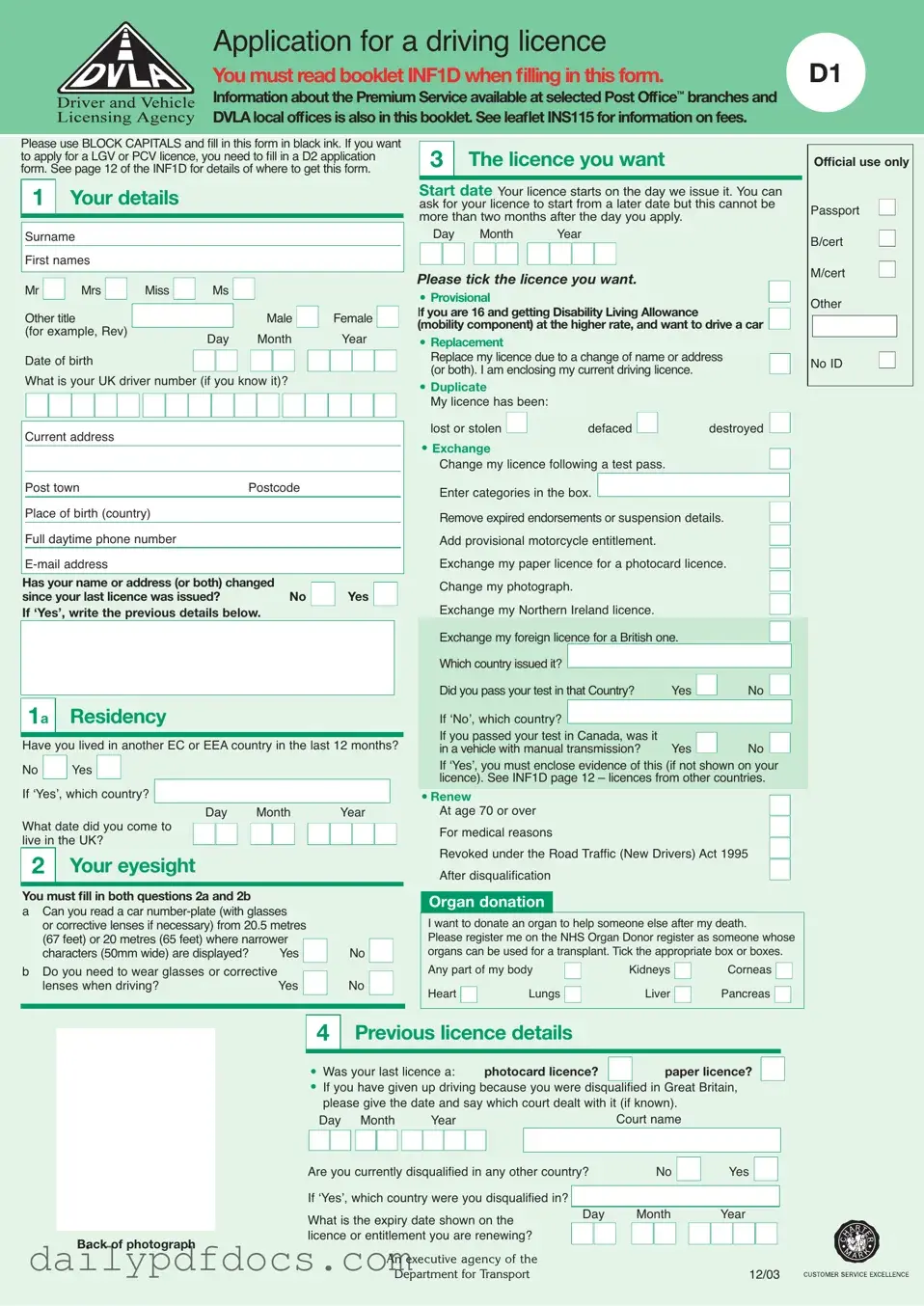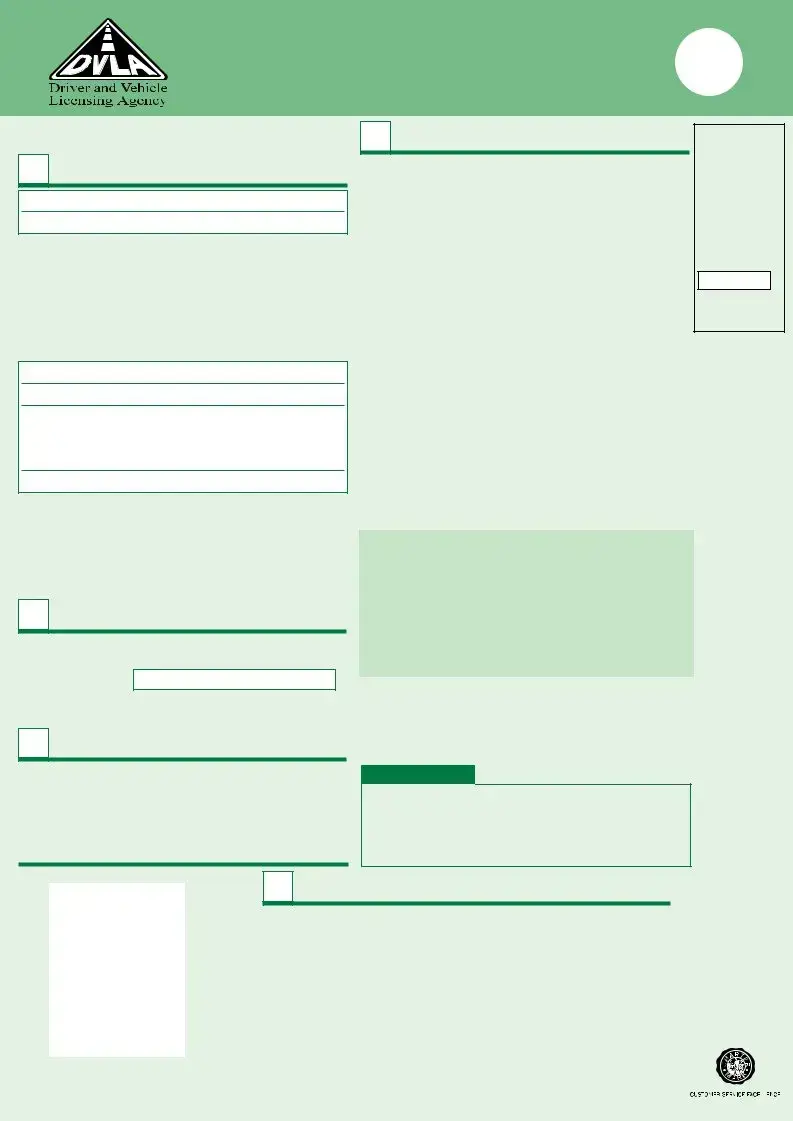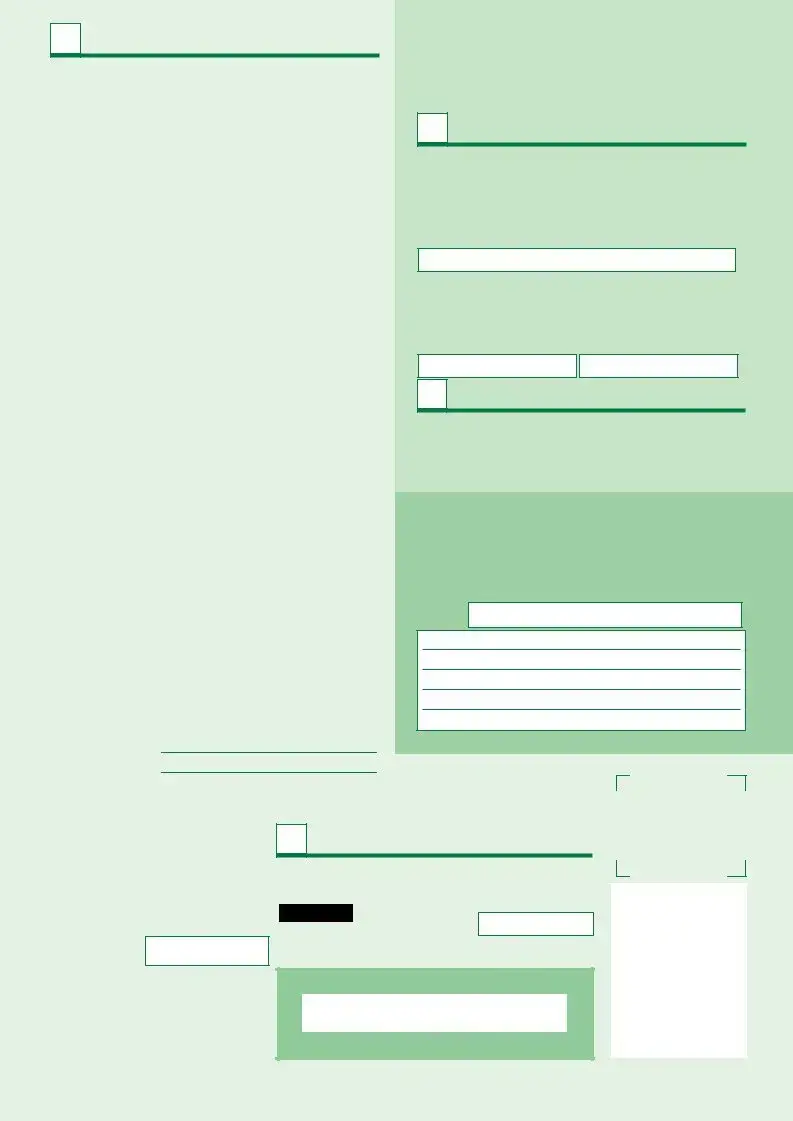What is the D1 DVLA form used for?
The D1 DVLA form is primarily used to apply for a driving licence in the UK. This includes applications for a new licence, replacement licences due to a change of name or address, or even for those who have lost their licence. It is essential for individuals who wish to obtain or renew their driving privileges to complete this form accurately.
What should I do before filling out the D1 form?
Before filling out the D1 form, it is crucial to read the accompanying booklet, INF1D. This booklet provides detailed instructions on how to complete the form, as well as information about the fees involved and the Premium Service available at select Post Office branches and DVLA local offices. Familiarizing yourself with this material will help ensure that your application is processed smoothly.
Do I need to provide a photograph with my application?
Yes, you will need to provide a recent photograph with your D1 application. The photograph must meet specific guidelines, including being a true likeness of you. If you are using identity documents other than a current UK passport, a reliable person must sign the back of your photograph, confirming that it is indeed a true likeness.
What if I have changed my name or address since my last licence was issued?
If you have changed your name or address since your last licence was issued, you must indicate this on the D1 form. You will need to provide your previous details in the designated section of the form. This ensures that the DVLA has your most current information on file, which is important for maintaining accurate records.
What health conditions do I need to declare on the D1 form?
The D1 form requires you to disclose any health conditions that could affect your ability to drive. This includes a range of conditions, such as epilepsy, diabetes, or any significant visual impairments. If you answer 'Yes' to any of the health questions, you may be required to complete a medical questionnaire. This step is vital for ensuring the safety of all road users.
How long does it take to process my application?
The processing time for a D1 application can vary. Generally, it may take up to three weeks for the DVLA to process your application. However, if you are using the Premium Service, you may receive your licence more quickly. It is advisable to apply well in advance of when you need your licence to avoid any delays.
What happens if my application is incomplete?
If your D1 application is incomplete or contains errors, the DVLA will likely return it to you for corrections. This can delay the processing of your licence. To avoid this, ensure that you have filled out all sections of the form accurately and have included all required documents and fees. Double-checking your application before submission can save you time and frustration.




